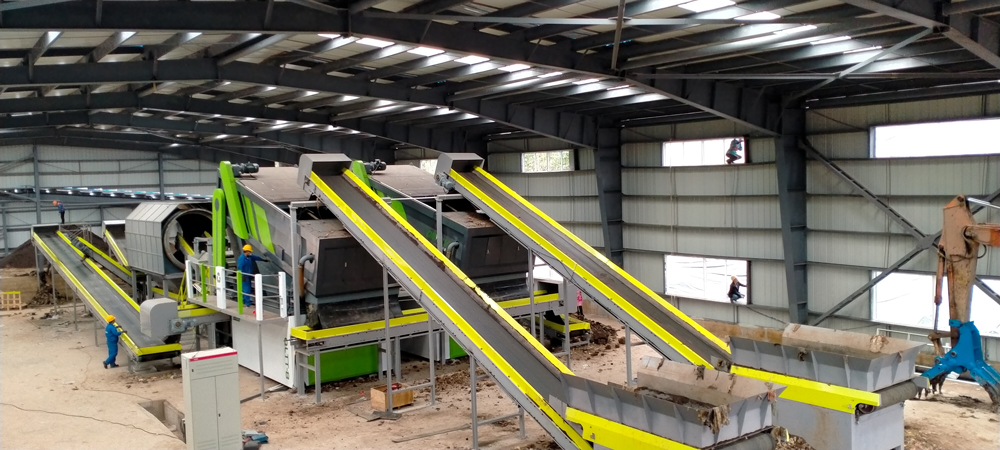 Time:2024-11-05
Time:2024-11-05
 Source:青绿环境
Source:青绿环境
With the acceleration of urbanization and the rapid development of the construction industry, construction waste has become a major source of urban environmental pollution. According to statistics, our country generates hundreds of millions of tons of construction waste annually, and how to handle and utilize this waste has become an urgent problem to be solved. In addressing this issue, construction waste sorting equipment plays a key role, transforming construction waste from mere waste into valuable resources.

Construction waste sorting equipment is an efficient device that can separate and classify various materials in construction waste. These devices separate different materials such as steel reinforcement, wood, plastic, and concrete from the waste through processes such as crushing, screening, magnetic separation, and air separation. After separation, these materials can be recycled and reused according to market demand.
For example, steel reinforcement can be used to manufacture new reinforced concrete components, wood can be used to make artificial boards or biomass fuel, plastic can be used to produce recycled plastic products, and concrete can be processed into recycled aggregate through crushing, washing, and grading, which can be used in roads, construction, and other fields. In this way, construction waste sorting equipment greatly improves the recycling rate of resources and reduces waste.
Furthermore, the application of construction waste sorting equipment also helps reduce environmental pollution. In the past, construction waste was usually treated by landfilling or incineration, which not only wasted resources but also caused environmental pollution. However, by processing through construction waste sorting equipment, harmful substances in the waste can be separated and removed, reducing the emission of pollutants and positively contributing to the improvement of urban environments.
With the continuous advancement of technology, the performance and efficiency of construction waste sorting equipment are also continuously improving. In the future, with the full implementation of waste classification policies, construction waste sorting equipment will be more widely applied in the field of construction waste treatment, making a greater contribution to promoting the development of a circular economy and improving urban environments.
In summary, the application of construction waste sorting equipment has turned construction waste from waste into valuable resources, not only improving the recycling rate of resources but also reducing environmental pollution. With the continuous advancement of technology and the increasing awareness of environmental protection, we have reason to believe that construction waste sorting equipment will play a greater role in the future, promoting the sustainable development of construction waste treatment.













 Prev
Prev











